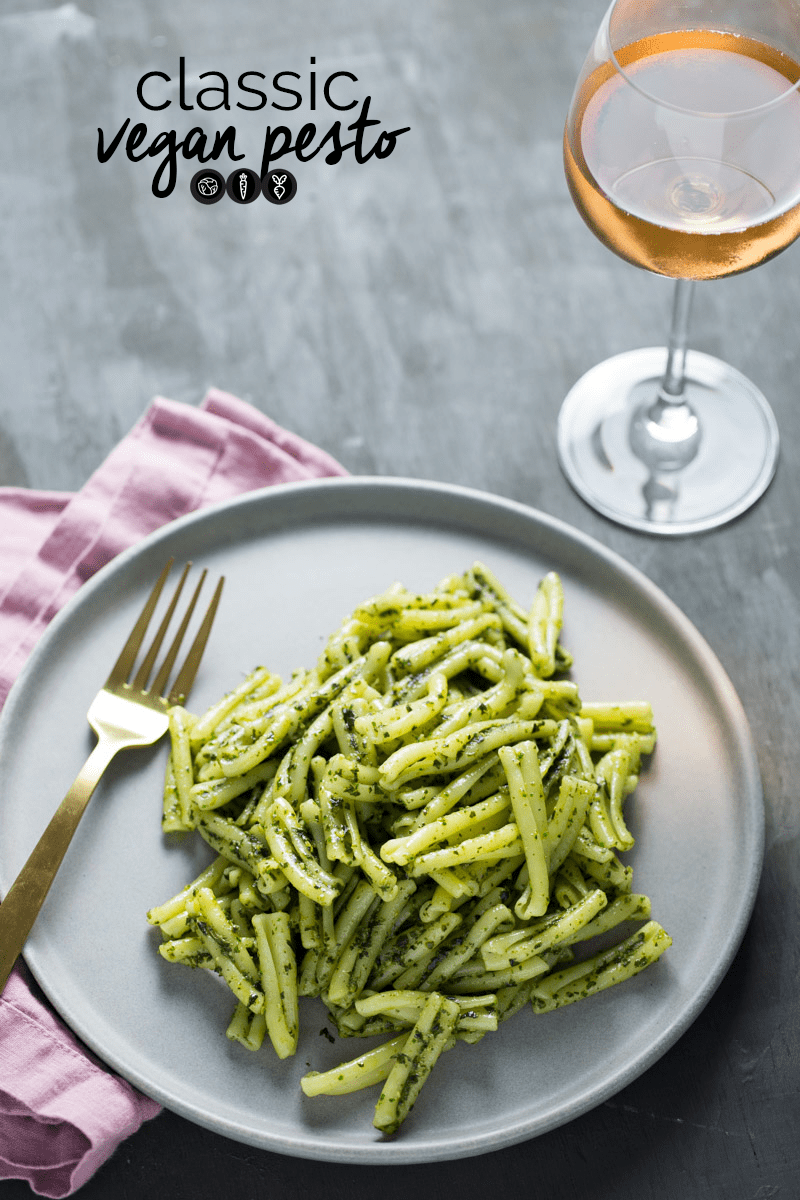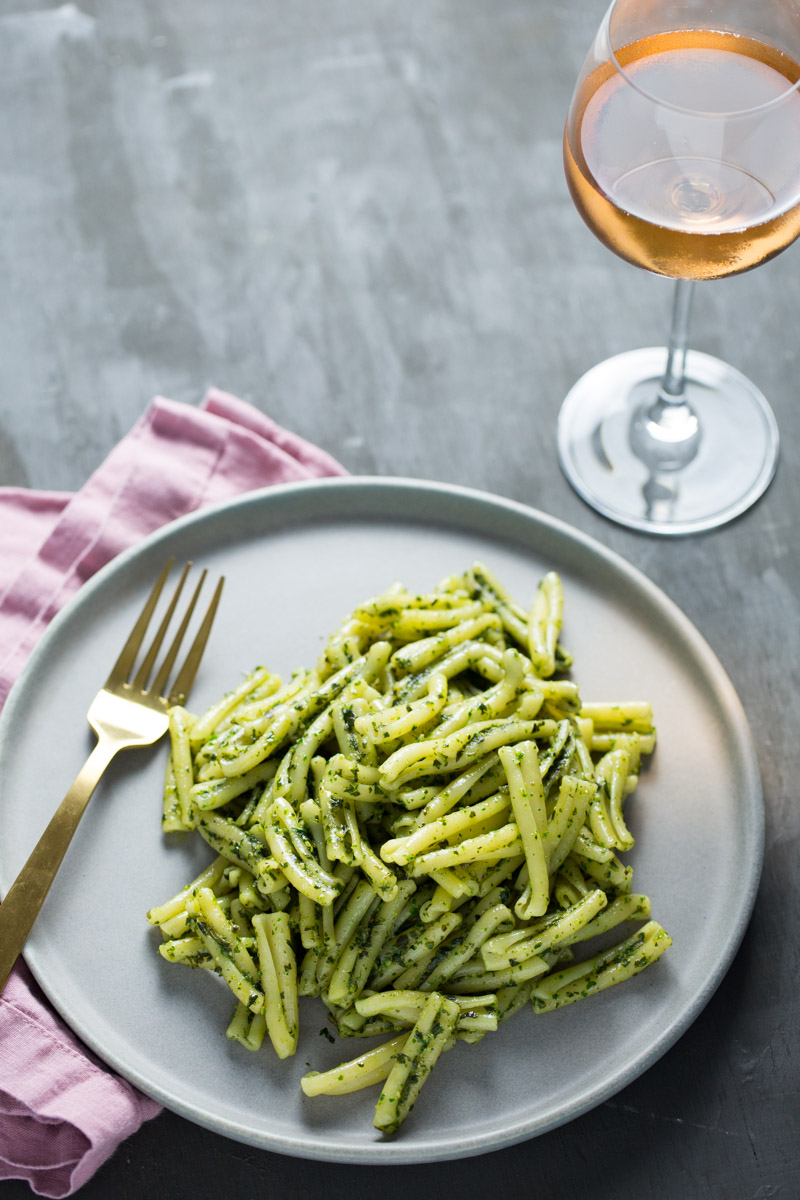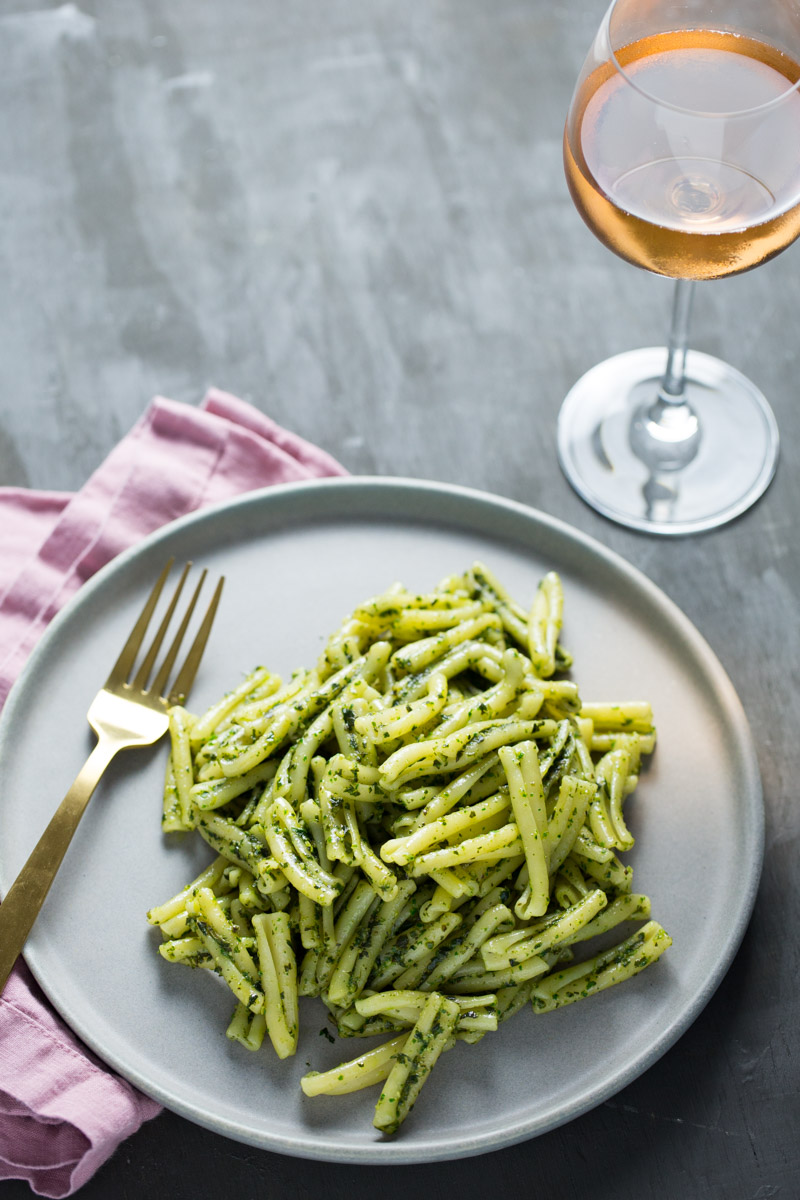
Why You’ll Love This Vegan Pesto
- Versatile: Use it as a sauce for pasta, a spread for sandwiches, a dip for veggies, or even as a dressing for salads.
- Creamy and Rich: Thanks to the combination of pine nuts and nutritional yeast, this pesto has a rich texture and umami flavor without the need for Parmesan.
- Quick and Easy: Ready in just 10 minutes, it’s perfect for those busy weeknights when you need something fast and flavorful.
INGREDIENTS TO MAKE VEGAN PESTO
- Fresh Basil and Parsley: The star of the show is fresh basil leaves, which give this pesto its signature flavor.
- Pine Nuts: Toasted for extra depth of flavor, pine nuts add a buttery richness.
- Garlic: For a little kick and depth of flavor.
- Olive Oil: A high-quality extra virgin olive oil provides the perfect base.
- Salt and Pepper: Simple seasonings to enhance all the flavors.
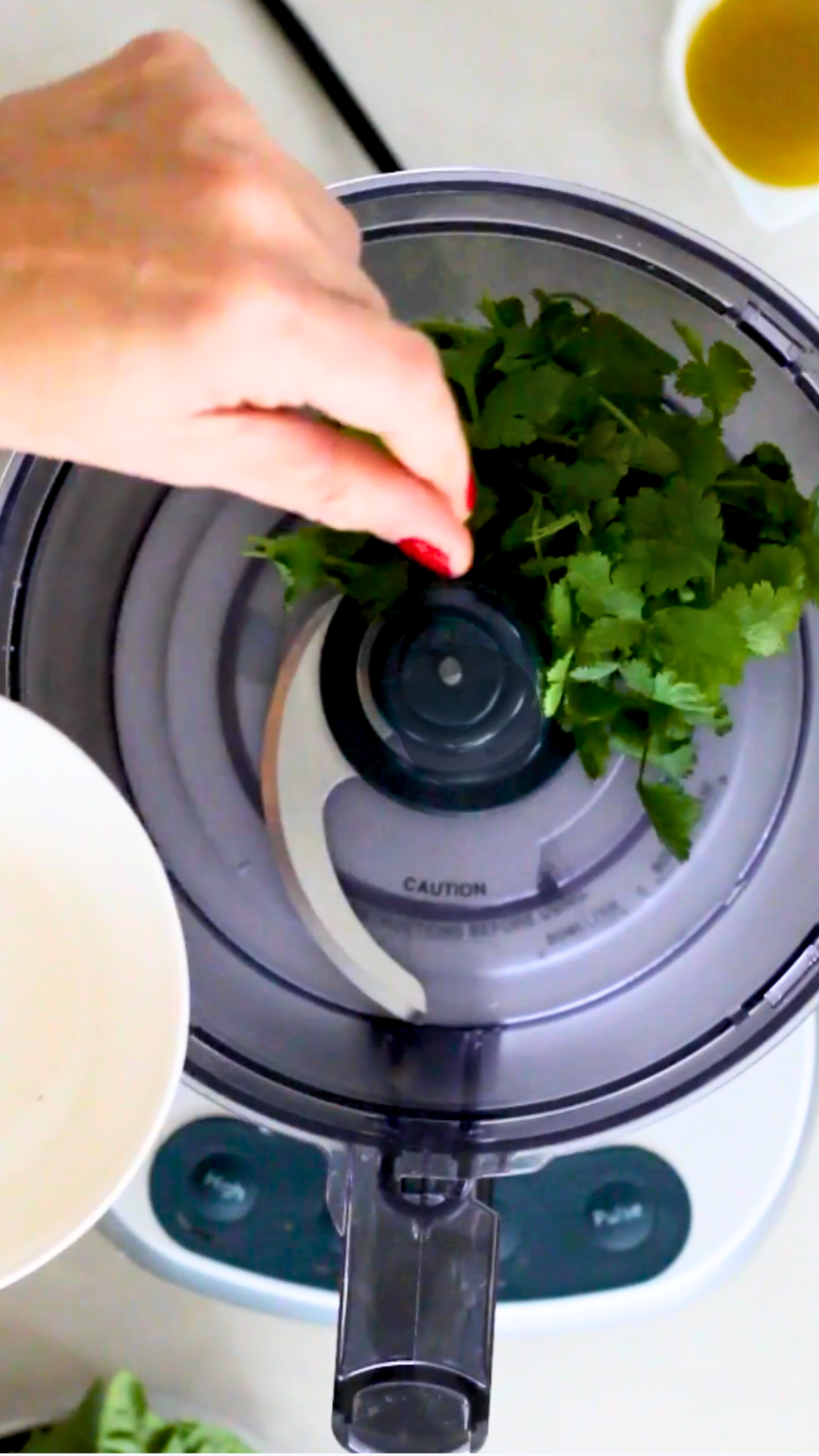
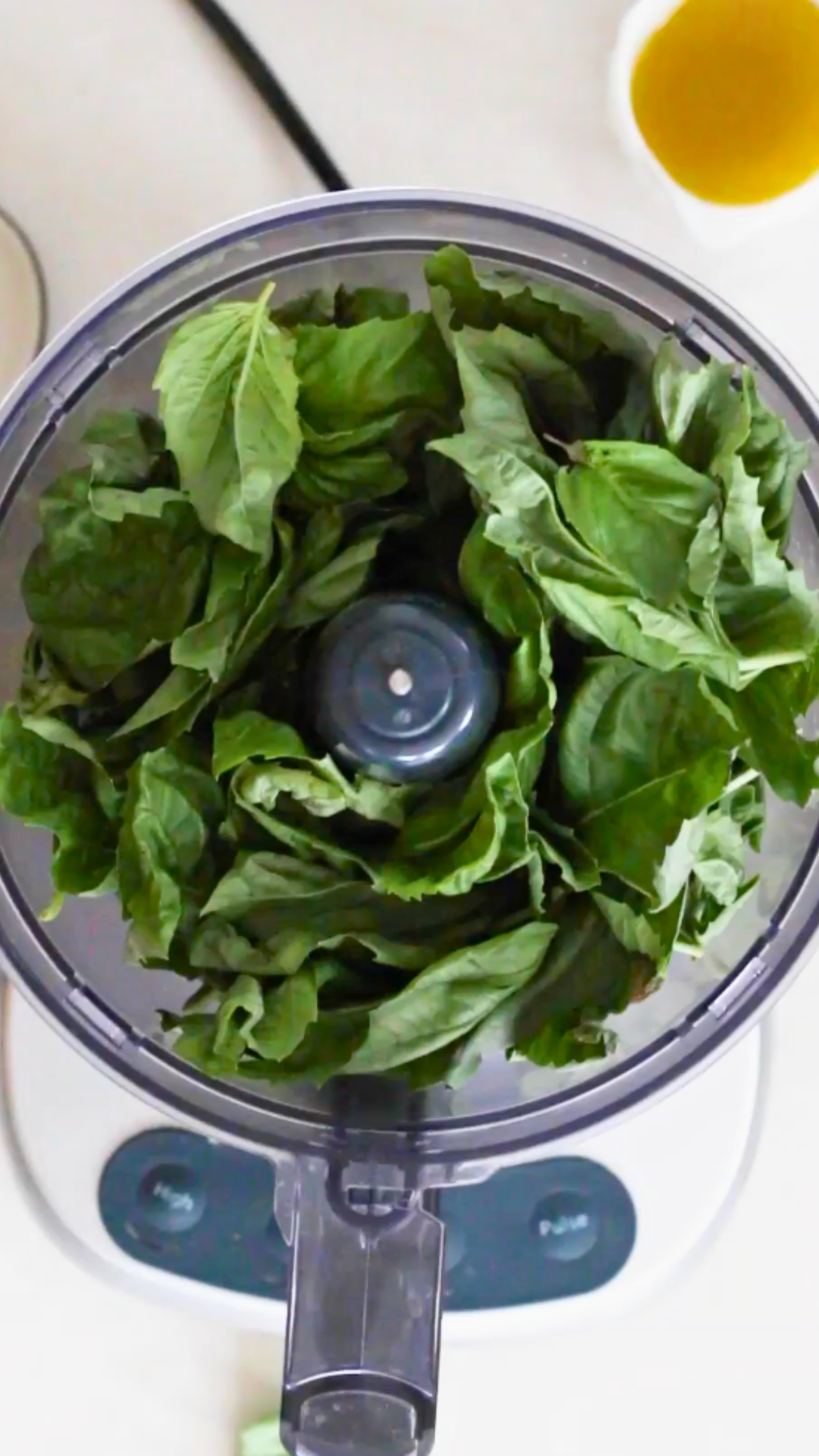
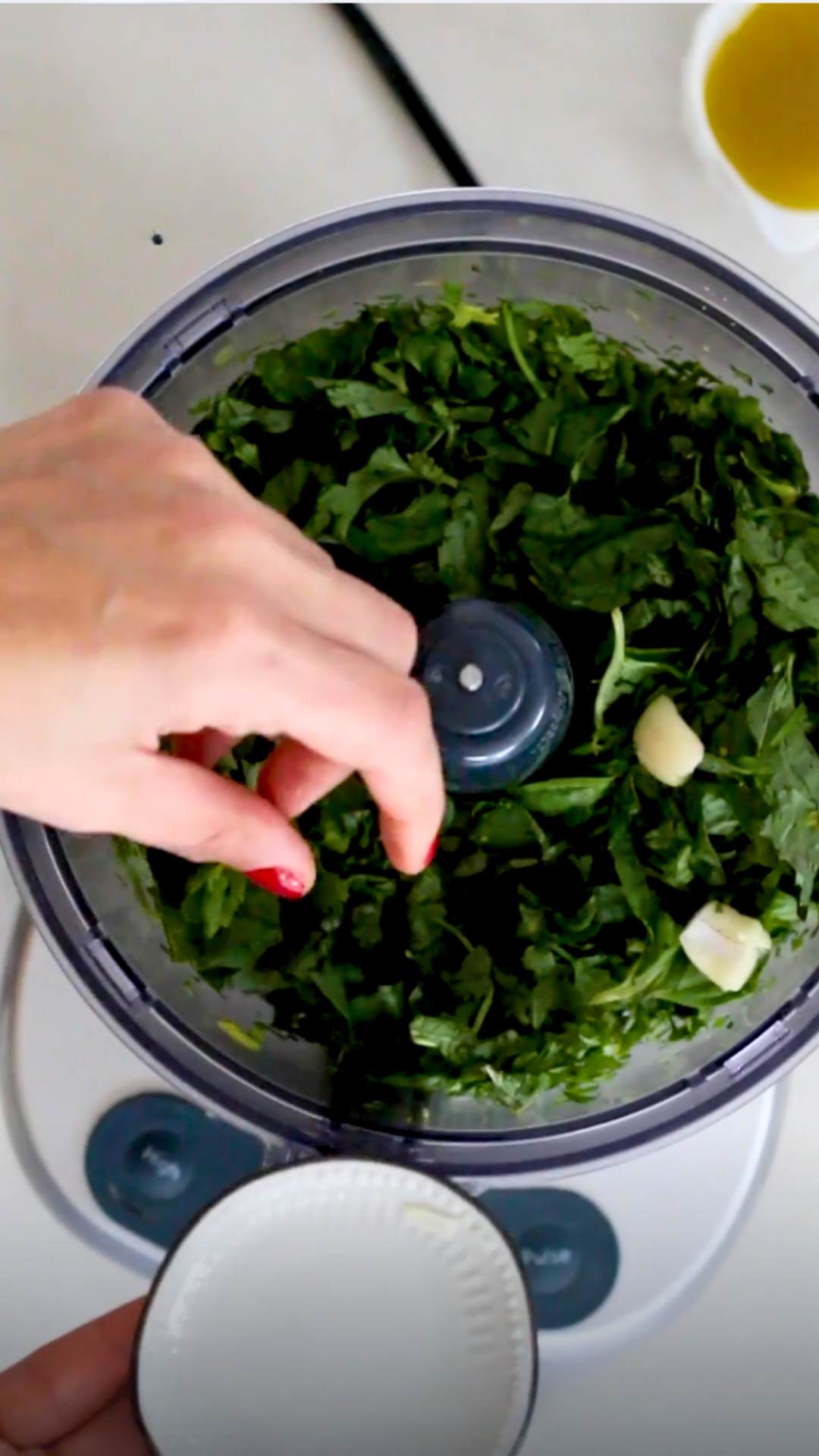
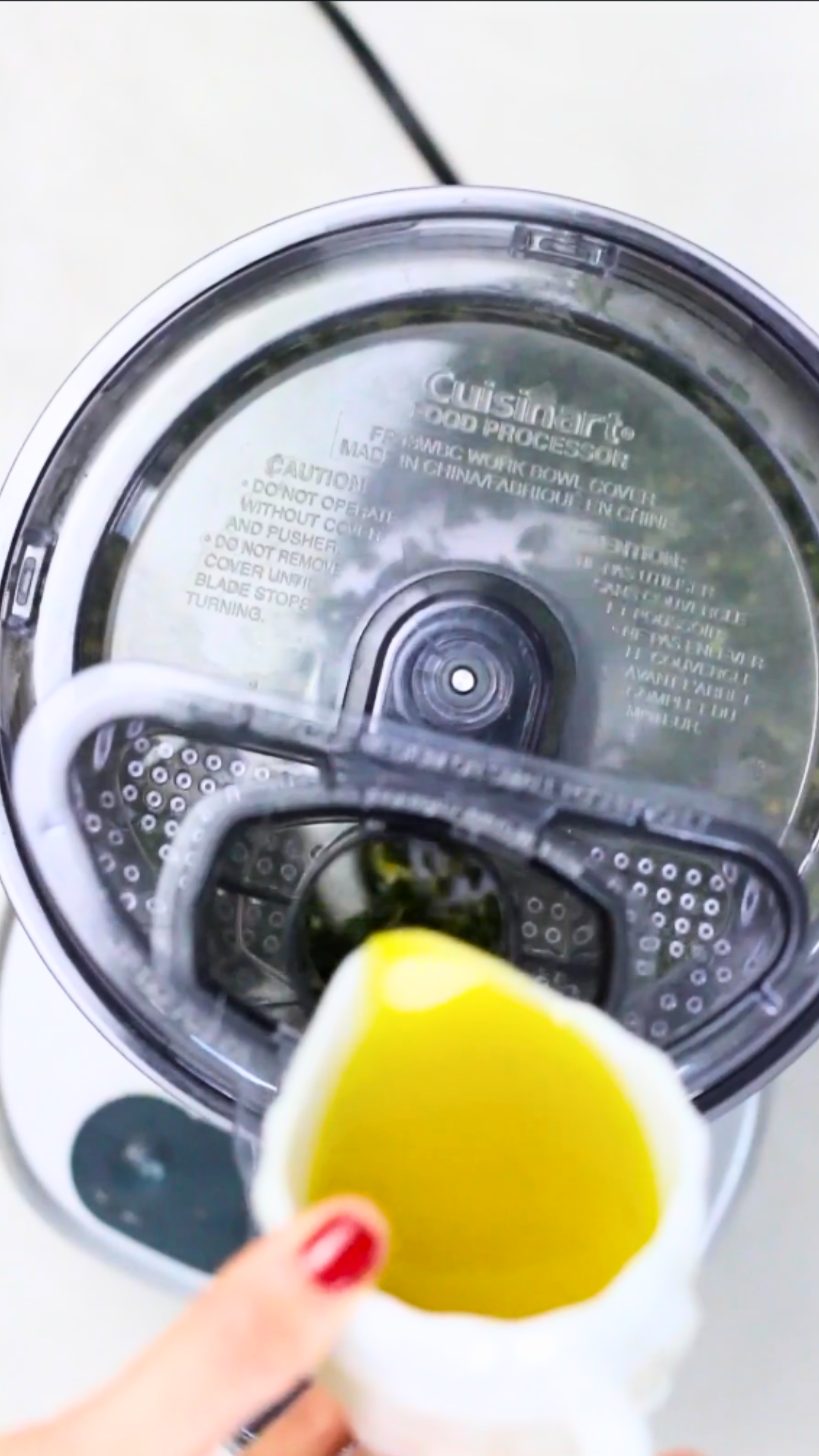
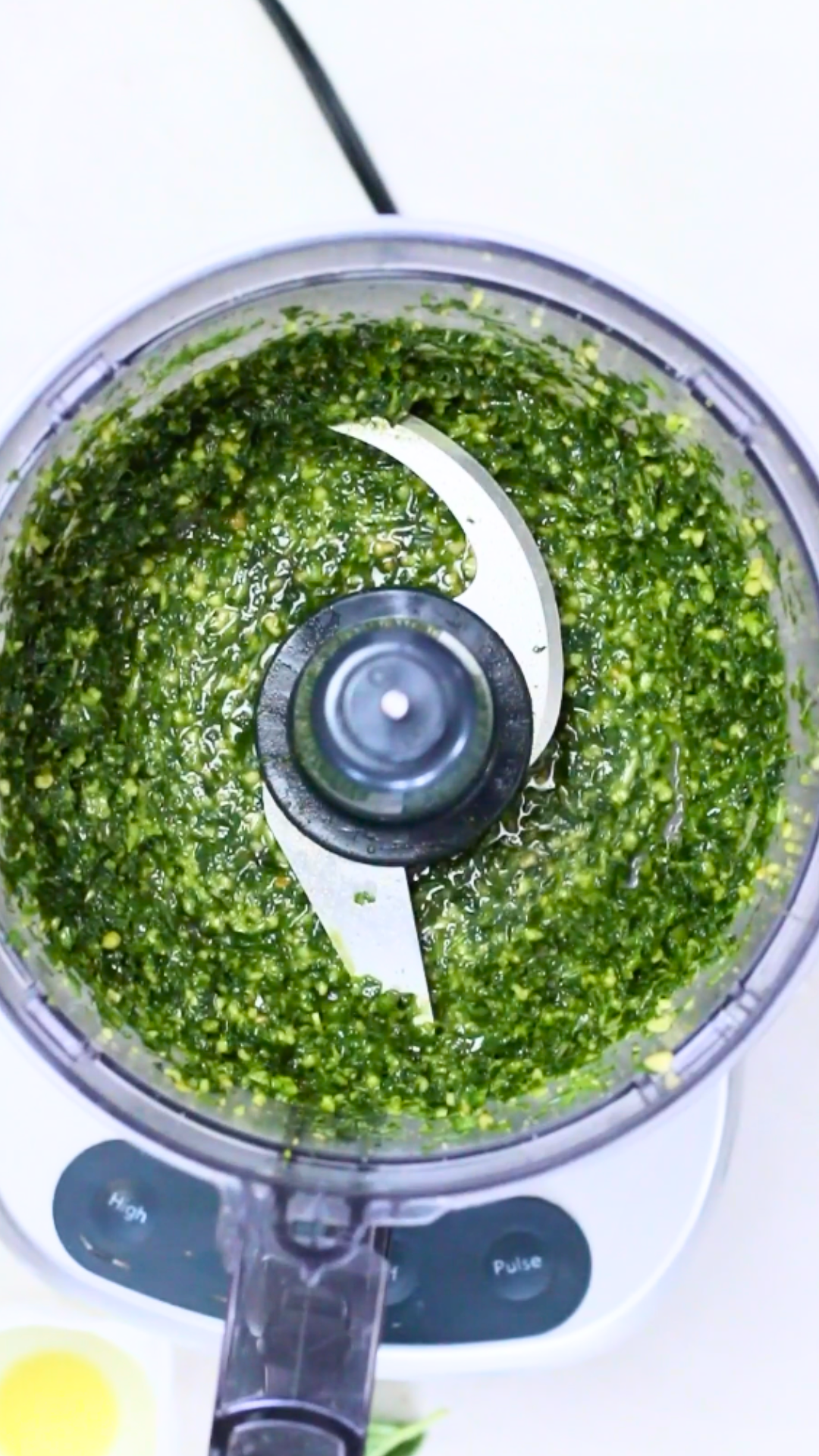
Step-by-step instructions for making vegan pesto
- Gather your ingredients: fresh basil, parsley, garlic, salt, olive oil, and pine nuts (or any other nut of your choice).
- Process. If using a food processor or blender, add the basil and parsley leaves. Pulse or blend until finely minced.
- Keep adding. Next, add the garlic clove (chopped), salt, and pine nuts to the processor or blender. Give it another pulse or blend to combine the ingredients.
- Add the olive oil. Slowly pour in the olive oil while the processor or blender is running at low speed. Continue blending until the mixture is well integrated and smooth.
- Pause and taste the pesto. If necessary, adjust the seasoning by adding more salt or any other desired spices.
- Once the pesto is ready, transfer it to a jar or airtight container. To prevent oxidation, add a thin layer of olive oil before sealing the container.
Variations. If using a pestle and mortar, follow the same process but manually crush and mix the ingredients until smooth and well combined.
Tips for making the best pesto
- Choose Fresh Ingredients: Fresh basil and high-quality olive oil make a big difference in the flavor of your pesto.
- Customize the Nuts: If you don’t have pine nuts, try using walnuts, almonds, or sunflower seeds instead.
- Make It Nut-Free: To make this recipe nut-free, swap out the pine nuts for sunflower seeds or hemp seeds.
- Storage Tip: To prevent the pesto from browning, pour a thin layer of olive oil over the top before storing it in the fridge.
Serving Suggestions
- Pasta: Toss it with your favorite pasta for a quick and easy dinner.
- Sandwiches: Spread it on sandwiches or wraps for a burst of fresh flavor.
- Veggies: Use it as a dip for fresh veggies or drizzle it over roasted vegetables.
- Pizza: Swap out traditional tomato sauce for a pesto base on your pizza.
- Dressing: As a dressing for potato salad.
- Topping: Add a spoonful of pesto to lasagna soup or a good pasta and bean soup.
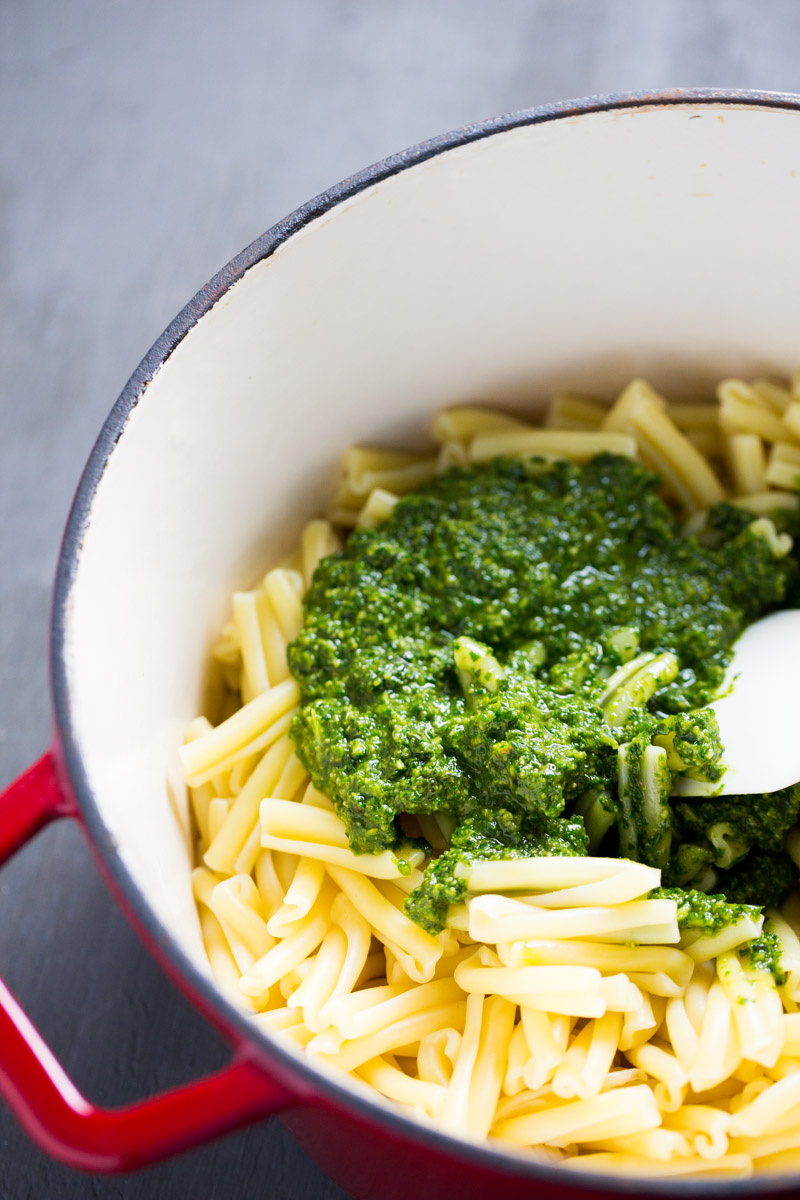
Classic vegan pesto
Equipment
Ingredients
- 3 cups basil
- 1 cup parsley
- 1 garlic clove
- 1/4 teaspoon salt
- 1/2 cup olive oil
- 1/2 cup pine nuts
- 1 teaspoon freshly ground black pepper
- big pinch of salt
- 1 pound casarecce or penne or any pasta
Instructions
- Put the rest of the ingredients in the blender or food processor, blend until well integrated.
- Taste for seasoning.
- Drain the pasta, saving one cup of water.
For pasta
- Cook pasta according to package directions.
- Add about three tablespoons of pesto to the pasta a mix carefully, slowly add more until all pasta has pesto. If it is dry add a 1/4 of water were the pasta cooked.
Video
Notes
Nutrition
information
Nutritional information of this recipe is only an estimate, the accuracy for any recipe on this site is not guaranteed.
WHAT IS PESTO?
Did you know that pesto is actually a sauce-making method derived from the Italian word “pestare,” meaning to crush, grind, or pound? To make pesto, all you need is a pestle and mortar to grind the ingredients into a paste-like consistency. The classic recipe consists of pine nuts, basil, parsley, garlic, Parmesan cheese, and olive oil blended to perfection.
But you can make pesto out of many, many things—for example, kale pesto, pistachio pesto, or a delicious pesto with almonds. You can even make pesto with avocado, which is super rich and is a super good source of vegan fat for our body.
